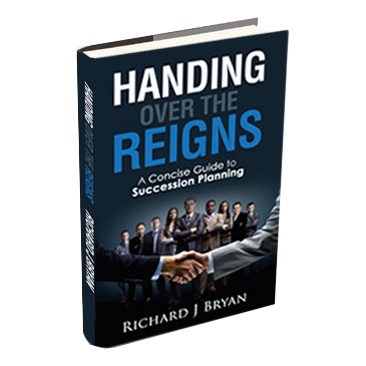4 Tips for Developing Your Company’s Future
As of last year, Baby Boomers represented 6–20% of the Western workforce—with an astounding 10,000 of them reaching retirement age every single day since 2011. That’s a lot of departing institutional knowledge, crossing virtually every sector of business, and I’ve written a bit about the importance of capturing this expertise before the tide fully recedes.
But recently, in my travels on the succession planning keynote speaker circuit, I’ve begun to field questions about developing the next generation of leaders during this incredibly pivotal time. It seems like just yesterday we were talking about Millennials entering the workforce, doesn’t it? Today, with the oldest in this massive and complex demographic turning 40, they’re on the verge of overtaking X-ers as the dominant generation. They’re established employees, managers and even company leaders. So it’s time to start thinking about how they see the world—and how these different views might impact your company’s culture.
Tech Trappings
In certain parts of the world, Millennials already represent 60% of the workforce—bringing with them radically different values, attitudes, expectations and behavior. This good news is that many of these changes are positive! While they’re not as tech-savvy as their scrappy Gen-Z incumbents, on the whole, Millennials embrace technology advances and understand the need for business systems, platforms and processes to evolve at breakneck speed.
This is a dramatic departure from previous generations, many of whom entered the workforce before or during the advent of the Internet—and who may have initially been intimidated by the sheer volume of progress during the last part of the 20th century. My previous assistant, Jean, fell into this category. One of the most emotionally intelligent people I’ve ever met, Jean was an old-school executive assistant who I inherited from my father. She finally retired a few years ago, at age 70, and I think of her with fondness nearly every day.
Remote Possibilities
But when the pandemic struck in 2020, I began to understand the inherent value that my new assistant, Katie, brings to the table. A 30-year-old Millennial, Katie is a true digital native. She’s never used a physical filing cabinet; everything in her world has always lived in the cloud. She entered a workforce that welcomes technology-based tools for managing projects and budgets; the idea of hanging Pendaflex folders, or routing a manila folder for physical sign-off would probably get an eye-roll emoji—and maybe even a giggle in real life.
Global Aspirations
Partly as a result of embracing technology, Millennials inhabit a bigger, broader world than previous generations could possibly have known. Unlike the trickle of information to which Boomers had access—think about paging through a musty encyclopedia rather than a quick scroll through Wikipedia—Millennials get their information from a virtual firehose. They appreciate and expect diversity, and understand their place in the global knowledge base.
For leaders and hiring managers, this can be both a blessing and a curse. According to the Society for Human Resources Management (SHRM), Millennials know what they want from their employers, and aren’t afraid to ask. In fact, they are “most likely to make specific requests regarding work conditions, including the assignment of tasks, resource planning, problem solving, training, scheduling, work location, work space, dispute resolution, guidance, coaching, recognition, promotions, raises, benefits and other rewards.”
Focused Attentions
To Gen X leaders like myself, this may sound a touch high-maintenance—and it is! But we have to remember how we got here, and it certainly wasn’t by leaving entire legions of latchkey kids to fend for themselves on leftovers and luck. As children, Millennials were insulated, educated, scheduled, supported and accommodated to a previously unheard-of degree. They think and learn differently, and may require more guidance and mentoring than those of us who may or may not have been raised by wolves. And perhaps even more importantly, they were conditioned to continue seeking the ideal wherever they can find it.
Dwindling Loyalties
As Millennials and Gen Z employees invade the workforce, employers are seeing a marked decline in long-term tenures. This will start to put pressure on organizations to extend succession planning beyond the CEO role—into nearly every corner of one’s enterprise.
In practice, this is easier said than done. I recently lost a director—a key team member who finally lost his valiant, six-year fight against a debilitating heart condition. He had been with our real estate company since it began, in 2009. Although I knew this day was coming, it was difficult to look beyond the person with whom I’d built a strong personal relationship over many years. It was even harder, I realize now, to accept the reason behind having to look.
3-D Succession Planning: My Top Tips
Having personally weathered this and even more serious succession planning failures over the course of my career, I now think about this process as being fully three-dimensional. So, as I work with my clients on the succession planning keynote speaker circuit, and as an outside advisor to several Boards, it’s no longer just about grooming top-level leadership—it’s about laying the groundwork for a smooth transition from virtually every role in your company. Here’s what works for me, and why.
1. Tap Talent
Look for the people in your organization who genuinely take pride in doing a good job. These are the employees who naturally put the company’s and customers’ best interests ahead of any personal acclaim. These are the folks to start investing in today.
In my dealership business, I called these people my “core competents”—obvious A-Players who went above and beyond to deliver exceptional results, regardless of what they were being asked to do. They were seldom self promoters; instead, they let their work and their results speak for them. I noticed that these people were easily able to build consensus with a cross-functional team; they also tended to be good at mentoring less-experienced people.
Louise was a great example. She was an accomplished sales executive, selling 300+ cars per year, but as a sales manager, she was also a gifted coach. She helped new sales people to develop self-confidence by showing them how to do the basics well and build that on top of a solid work ethic—possibly because this is precisely how she came up in our business.
2. Set Up Success
The next generation of employees, at every level, will be under pressure to get more work done in less time, whether working in-person or remotely. When asking a high-performer to step up into a leadership role make sure they are fully prepared for the additional responsibility and authority. A few things to keep in mind on this subject:
- True story: management is more than extra paperwork! They have to work with their team, lead them and hold them accountable for results. Make sure you clearly outline what success looks like as a leader for your organization.
- Check in regularly with newly appointed leaders. Ask them about challenges they might be facing, and work with them to problem-solve potential solutions.
- Schedule regular informal reviews. I did weekly 1-on-1 meetings with all of my direct reports. It’s critical with young and/or inexperienced leaders to be able to course-correct often—this stops small issues from becoming big ones!
- Be crystal clear about your expectations. At any level, nothing is worse than trying to guess where and how your boss wants you to direct your focus and ambition.
3. Praise Often
Millennials, more than any other generation, thrive on praise and recognition. Keep track of their successes and give regular feedback as part of your succession planning process. As one of my sales managers used to say, “Feedback is the breakfast of champions!”
4. Start Yesterday
With a phased and proactive approach, this need not be an overwhelming process. Work on identifying and developing your stars NOW—both with on-the-job training and mentoring as well as external forms of professional development. The rising workforce expects this from employers, and will look elsewhere if you fail to provide it.
Want more personalized tips for developing the next generation of leaders? Sign up for our mailing list to be notified of upcoming succession planning retreats.
Related Topics:
Business Contingency Planning: What, Why + How
Stepping Out, Not Down: Why Your Aging CEO Won’t Retire
The Role of the Board During Family Business Succession


